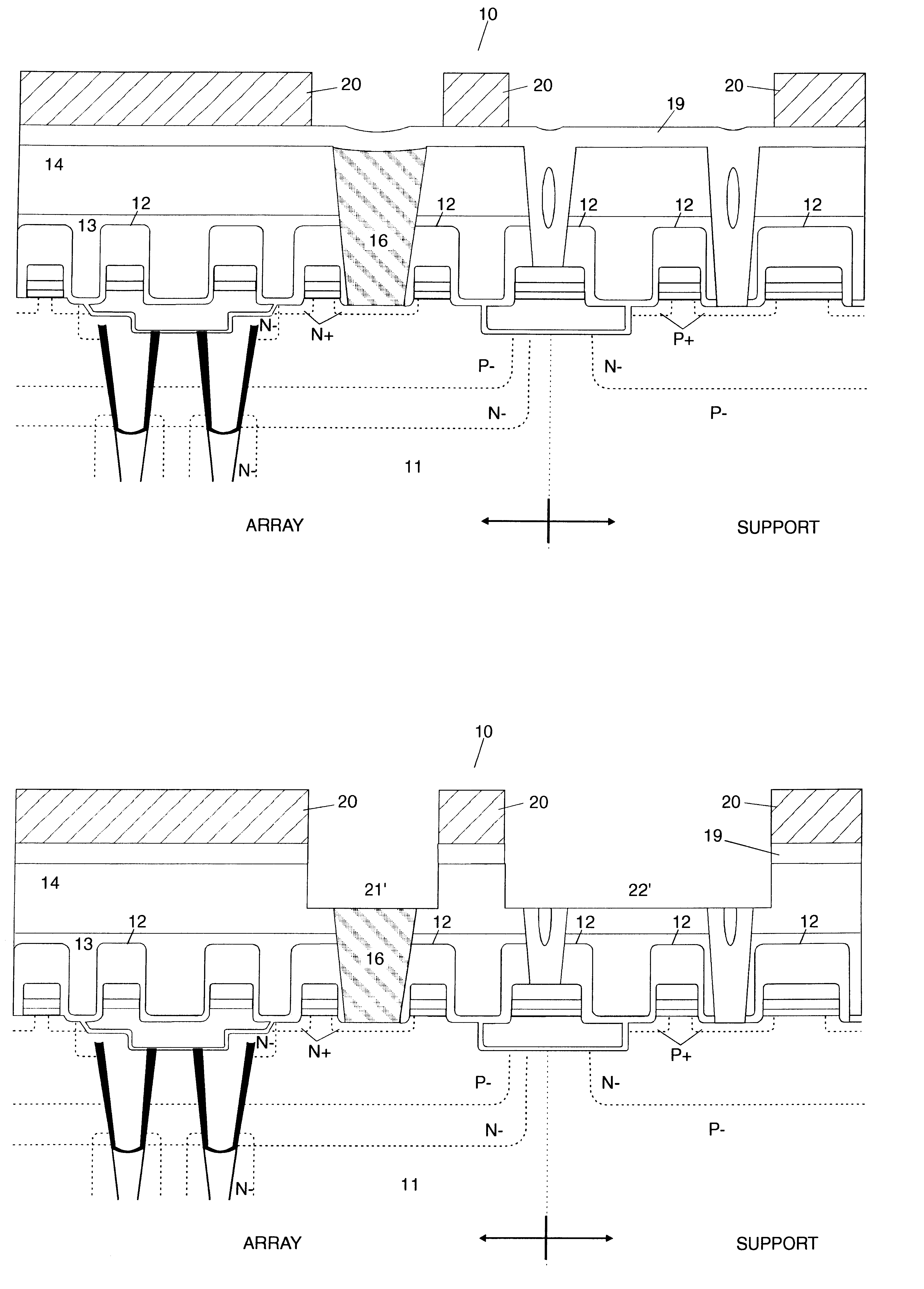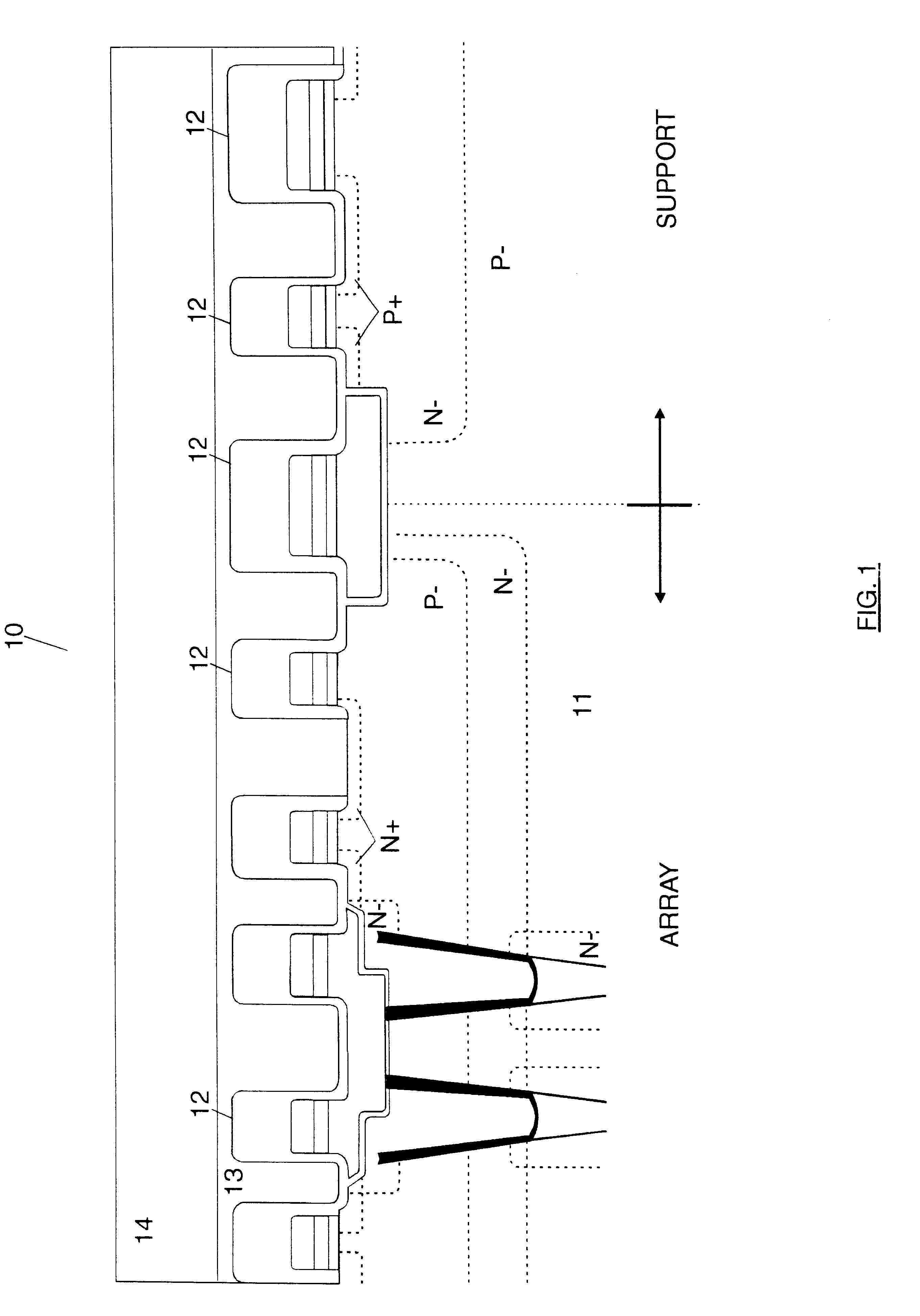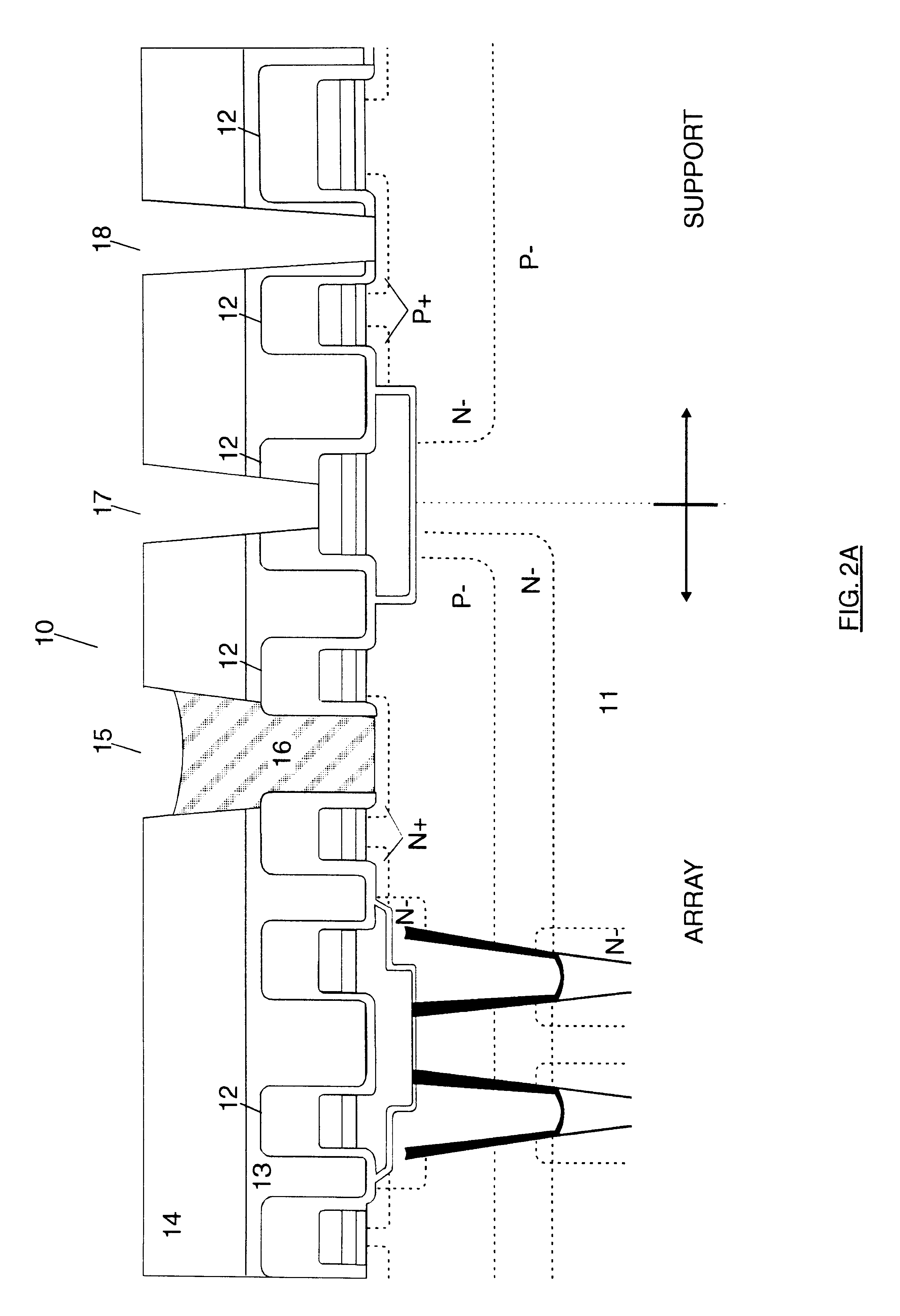Method of forming metal lands at the M0 level with a non selective chemistry
- Summary
- Abstract
- Description
- Claims
- Application Information
AI Technical Summary
Benefits of technology
Problems solved by technology
Method used
Image
Examples
Embodiment Construction
Applicant's inventor has discovered that the plasma etching process of the prior art method described above by reference to FIG. 1 and FIGS. 2A to 2E can be significantly improved. The essential point consists in an etching chemistry change which in turn requires some modifications in the above described operating conditions. An additional process optimization may be obtained thanks to a different wafer plasma environment.
First of all, it has been experimentally demonstrated that to improve the process of etching the ARC layer 19 and the TEOS layer 14 to produce the desired M0 land recesses with an uniform result, the chemistry must not be selective, i.e., it must be able to etch ARC, TEOS and doped polysilicon materials at the same rate. Moreover this chemistry must not contain oxygen to avoid any degradation of the M0 land recess side walls. As a result, with such a chemistry, the step of etching the polysilicon stud 16 described by reference to FIG. 2A is no longer necessary and ...
PUM
| Property | Measurement | Unit |
|---|---|---|
| Temperature | aaaaa | aaaaa |
| Temperature | aaaaa | aaaaa |
| Temperature | aaaaa | aaaaa |
Abstract
Description
Claims
Application Information
 Login to View More
Login to View More - R&D
- Intellectual Property
- Life Sciences
- Materials
- Tech Scout
- Unparalleled Data Quality
- Higher Quality Content
- 60% Fewer Hallucinations
Browse by: Latest US Patents, China's latest patents, Technical Efficacy Thesaurus, Application Domain, Technology Topic, Popular Technical Reports.
© 2025 PatSnap. All rights reserved.Legal|Privacy policy|Modern Slavery Act Transparency Statement|Sitemap|About US| Contact US: help@patsnap.com



